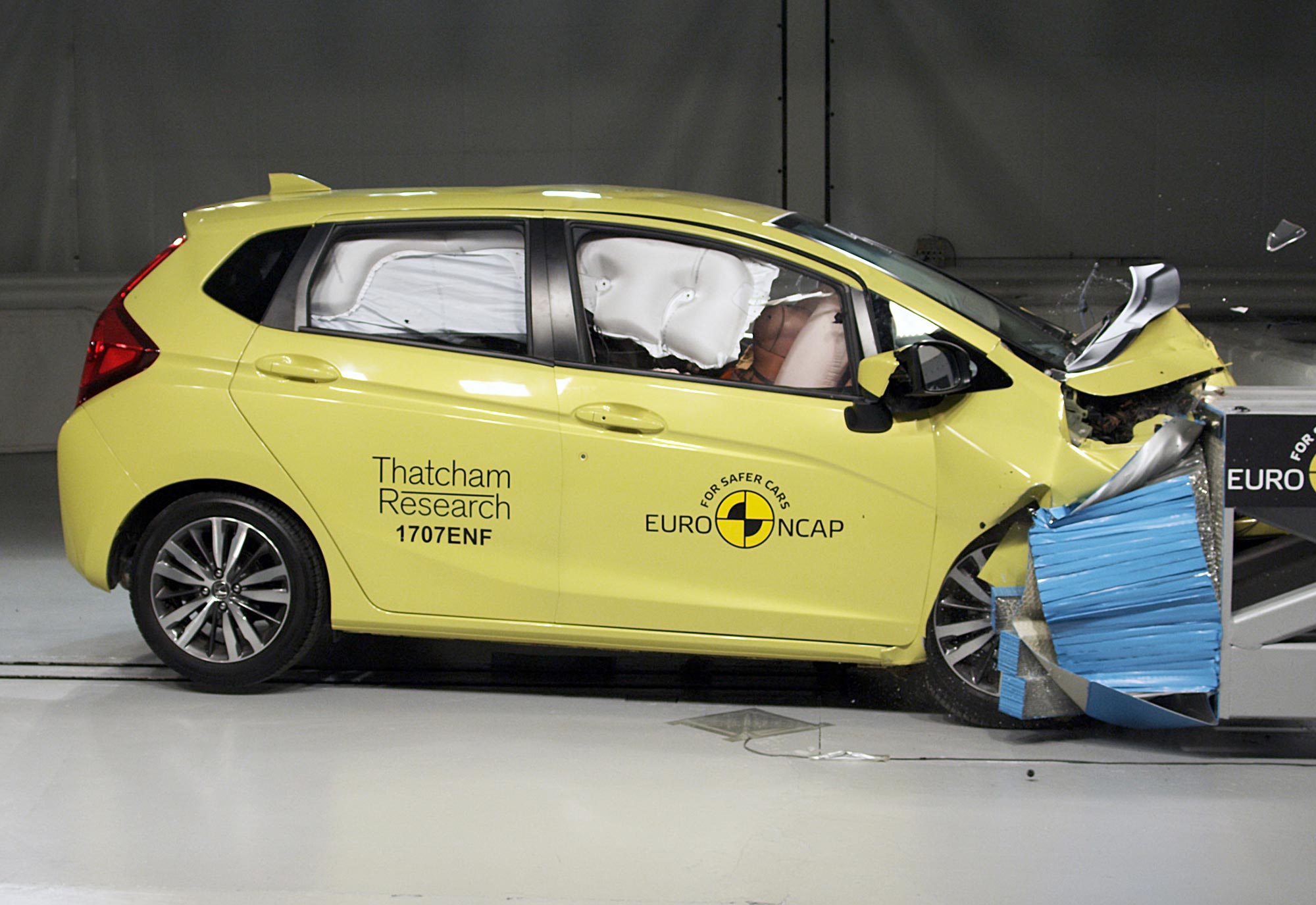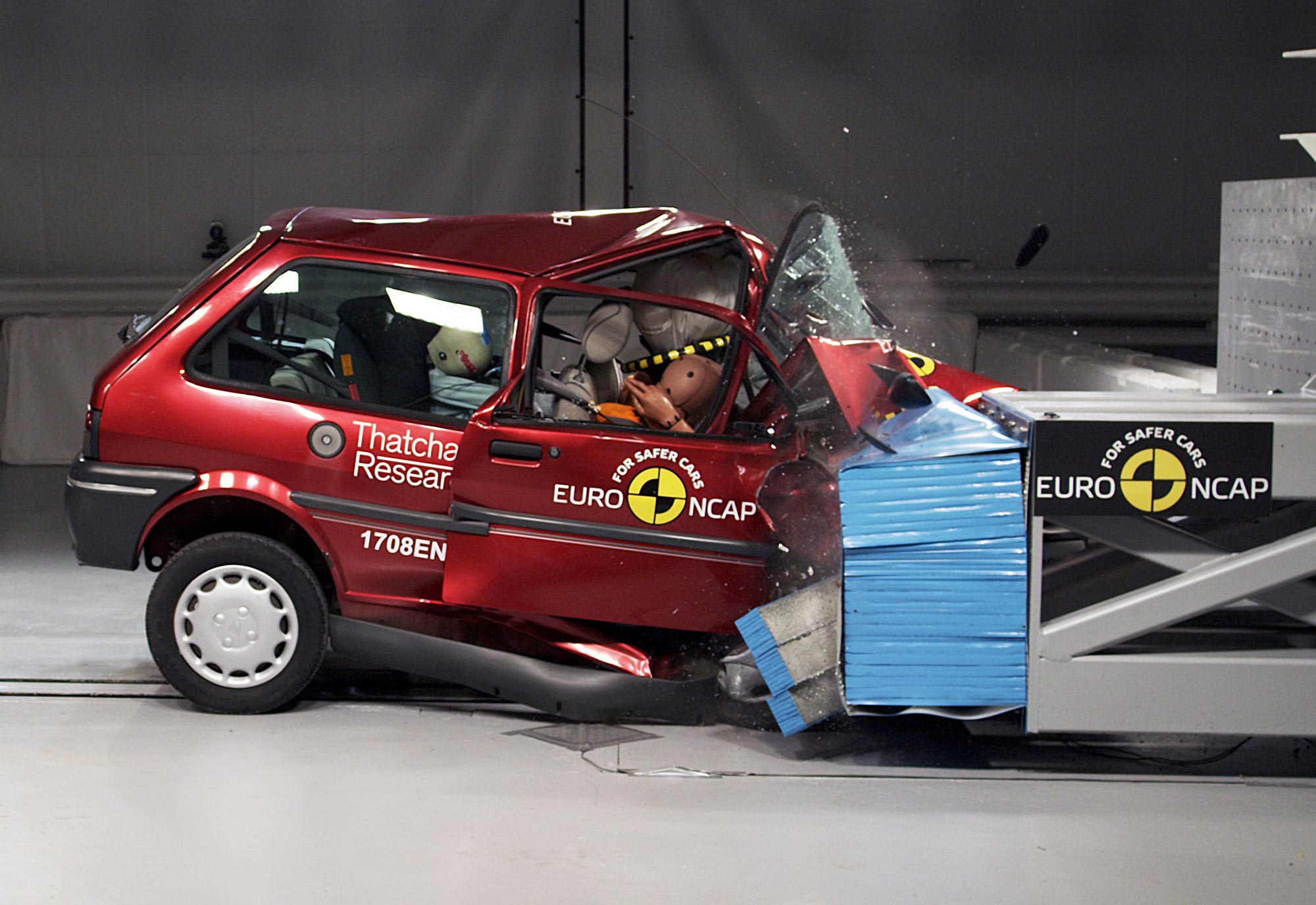







Introduced in February 1997, Euro NCAP is marking two decades of safety tests with a crash demonstration of two family cars built 20 years apart.
Euro NCAP recalled how the tests were introduced in the face of fierce motor industry opposition, exposed hidden dangers in top-selling family cars, forcing a fundamental rethink in the way vehicles were designed to prevent injuries and save lives. Twenty years on, 9 out of 10 cars sold on the European market hold a Euro NCAP rating.
To demonstrate 20 years of progress, a 1997 Rover 100 and a current Honda Jazz were tested by Thatcham Research, who conduct UK tests for Euro NCAP. The results clearly show the improvements made over the last two decades. Thatcham estimates that advances driven by rigorous testing has helped deliver a 63 per cent reduction in car occupants killed and seriously injured, from 23,000 in 1997 to 8,500 in 2015.
Over the same period the number of pedestrians and cyclists killed or seriously injured has fallen by 40 per cent, from 14,500 in 1997 to 8,500 in 2015. Thatcham Research is marking the 20th anniversary by urging consumers to further boost Britain’s road safety record by making a commitment to buy only models with a five star Euro NCAP rating and a collision avoidance technology like AEB and Lane Assist systems. They also called on manufacturers to make AEB (Autonomous Emergency Braking) standard fitment, estimating that if AEB that can sense pedestrians and cyclists as standard on every new car sold in the UK, it would save 2,700 pedestrian and cyclist deaths and serious injuries every year. Over a further 20 years, this would mean 54,000 fewer fatalities.
Since 1997 Euro NCAP has assessed 629 different car models, resulting in nine out of 10 cars now sold in Europe holding an official Euro NCAP rating. Safety technologies that were non-existent or optional at best - such as driver and passenger airbags, side curtain airbags, seatbelt reminders and electronic stability control – are now standard on most cars sold in Europe.
Backed by the UK Government, the FIA (Federation Internationale de l’Automobile) and the Swedish and Dutch Governments, the first Euro NCAP crash test results were revealed on February 4 1997. Until then car makers had to meet only basic legislative crash test requirements for new cars. They conducted their own crash tests but they were not standardised - and the results were not published. It was impossible for consumers to compare the safety of one car with another.
In the first test, of seven popular ‘super-mini’ sized cars, the Ford Fiesta and Volkswagen Polo each achieved three stars out of the then-maximum of four, based on protection levels offered to adult occupants.
The top-selling Rover 100 (formerly the ‘Metro’) achieved only one star while the Fiat Punto, Nissan Micra, Vauxhall Corsa and Renault Clio achieved only two stars. When pedestrian protection was assessed, no vehicle scored more than two points, suggesting that manufacturers were not designing front ends with vulnerable road users in mind.
Leading car manufacturers attacked the tests, claiming they were so severe that it was ‘impossible’ to achieve four stars. Five months later, however, Volvo’s S40 became the first four-star car for occupant protection.
In the future, other new technologies being tested by Euro NCAP for inclusion in the 2018 rating system include: Lane Assist systems to control steering if there are potential risks; tests to reduce crashes at junctions; Pedestrian AEB that works at night time and new AEB cyclist detection tests to encourage manufacturers to further enhance these important technologies.
